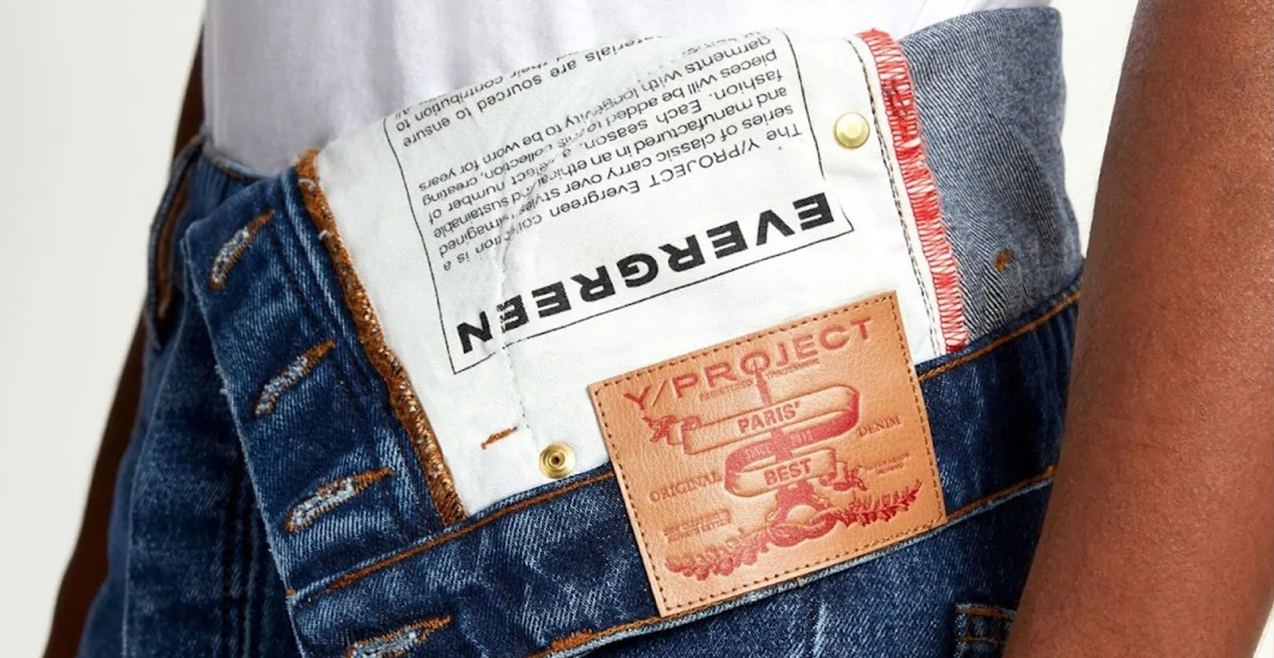As most independent designers know, fashion month is no walk in the park. As financial costs spike and industry grants dwindle, many have been forced to make sacrifices just to stay afloat. Y/Project understands this struggle all too well; earlier this week, the brand announced that it would be canceling its upcoming Paris Fashion Week show to save on funds.
But even without its regular PFW slot, Y/Project is still moving the needle in fashion. In partnership with Arianee, the brand announced this week that it would be embedding digital product passports into the denim garments from its Evergreen collection in hopes of facilitating a more transparent and personal relationship with its audience.
In other news this week, Hugo Boss has teased the next chapter of its Web3 strategy, which will include a metaverse destination and a gaming platform, while Andreādamo released an AI-generated campaign in lieu of a physical fashion week runway.

What happened: On February 23, Y/Project announced that each denim piece from its Evergreen collection will be equipped with a digital product passport, driven by blockchain infrastructure leader Arianee.
These passports provide evidence of ownership, insights into product history, transparent supply chain details, streamlined resale processes, and ownership-related communications such as invitations, offers, and brand information.
The verdict: As digital product passports become more popular, brands are adopting their own approach to the tech that aligns with their image and demographic. For Y/Project, a label whose eccentric, urban aesthetic resonates strongly with the youth culture of Gen Z, that means delivering something that appeals to its young consumers.
Personalized offers and invites, for example, will likely capture the attention of this cohort, who seek unique luxury experiences.

What happened: Hot on the heels of its 33-foot hologram campaign, which caught the eyes of London revelers and the rest of the world, Hugo Boss has teased the next phase of its Web3 playbook in line with the launch of its new denim label, Hugo Blue.
While details remain sparse, the brand’s press release states that as part of the line’s official launch in Berlin on March 6, it will also unveil a new digital world, along with gamified entertainment experiences.
The verdict: Hugo Boss is following in the footsteps of Tommy Hilfiger with its Web3 portfolio, moving away from “one-and-done” digital activations to create a full-fledged virtual universe for its audience.
Celebrating its centenary year this year, the brand has been heavily investing in a new tech-forward era to maintain relevance, which started with its “Techtopia” Milan Fashion Week showcase last September. The latest project further amplifies this commitment, integrating emerging tech as a core element of the brand’s DNA.

What happened: Milanese label Andreādamo forewent the Milan Fashion Week catwalk this season in favor of an experiential art installation and AI-generated campaign. Merging reality and fantasy, the brand showcased its Fall 2024 collection via AI-powered visuals exploring the concept of “second skin.”
The surrealist images, created using machine learning, depict an AI-generated model wearing pieces from the collection. This gives the illusion of the clothes fusing into the wearer’s body, making it difficult to distinguish where the clothes end and the human body begins.
The verdict: As surrealism gains traction in fashion, AI is making it easier for brands to push the boundaries of creativity and create visuals that appeal to the whimsical allure of the trend.
Andreādamo’s campaign images are a far cry from the bizarre and often grossly inaccurate visuals artificial intelligence is notorious for churning out, demonstrating just how rapidly the technology is evolving. As the tech becomes more dextrous in its capabilities, brands will be faced with more opportunity to take their ideas and concepts — which may not be achievable in the physical realm — to new heights.

